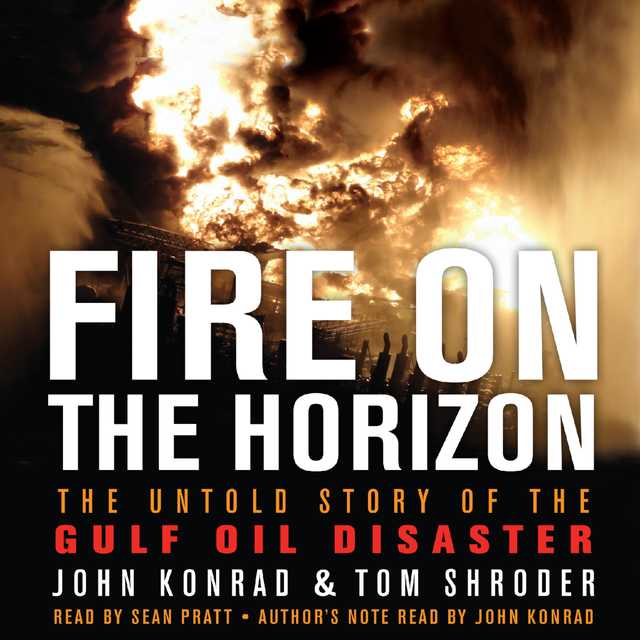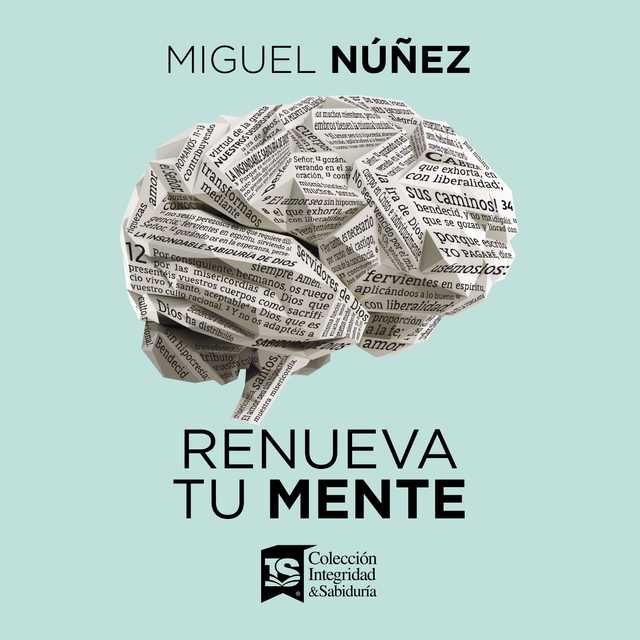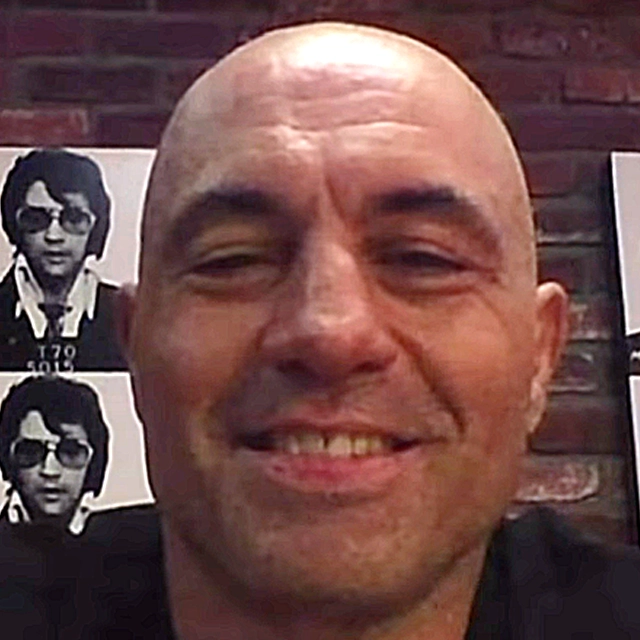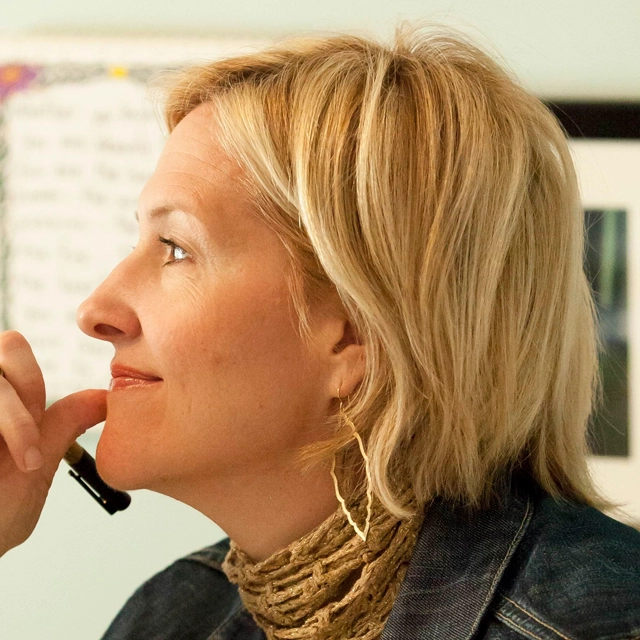Fire on the Horizon Audiobook Summary
“A phenomenal feat of journalism. . . . I tore through it like a novel but with the queasy knowledge that the whole damn thing is true.” –Sebastian Junger, author of The Perfect Storm and War
Blending exclusive first-person interviews and penetrating investigative reporting, oil rig captain John Konrad and veteran Washington Post writer Tom Shroder give the definitive, white-knuckled account of the Deepwater Horizon explosion–as well as a riveting insider’s view of the byzantine culture of offshore drilling that made the disaster inevitable. As the world continues to cope with the oil spill’s grim aftermath–with environmental and economic consequences all the more dire in a region still rebuilding from Hurricane Katrina–Konrad and Schroder’s real-time account of the disaster shows us just where things went wrong, and points the way to a safer future for us all.
Other Top Audiobooks
Fire on the Horizon Audiobook Narrator
Sean Pratt is the narrator of Fire on the Horizon audiobook that was written by Tom Shroder
Tom Shroder was an editor and writer at The Washington Post from 1999 to 2009. Under his stewardship, The Washington Post Magazine won the Pulitzer Prize for feature writing in both 2008 and 2010. He is the author of the nonfiction bestseller Old Souls. He lives in Vienna, Virginia.
About the Author(s) of Fire on the Horizon
Tom Shroder is the author of Fire on the Horizon
More From the Same
- Author : Tom Shroder
- The Most Famous Writer Who Ever Lived
- Old Souls
- Publisher : HarperAudio
- Abraham
- American Gods [TV Tie-In]
- Dead Ringer
- House of Sand and Fog
- Prey
Fire on the Horizon Full Details
| Narrator | Sean Pratt |
| Length | 8 hours 22 minutes |
| Author | Tom Shroder |
| Publisher | HarperAudio |
| Release date | March 01, 2011 |
| ISBN | 9780062064370 |
Additional info
The publisher of the Fire on the Horizon is HarperAudio. The imprint is HarperAudio. It is supplied by HarperAudio. The ISBN-13 is 9780062064370.
Global Availability
This book is only available in the United States.
Goodreads Reviews
Ryan
March 06, 2011
I finished reading Fire on the Horizon last night and in my attempt to sum up the events surrounding the sinking of the oil rig Deepwater Horizon I’ve chosen “complicated.” Don’t read that as my take on the book itself; no, this single word is aimed at undertaking the nearly impossible task of drilling some 3+ miles under the sea floor looking for oil all without “something” going wrong.Fire on the Horizon is an awesome journey following the birth, and eventual death, of the oil rig Deepwater Horizon; it explores the complexities of finding, drilling, and extracting oil all while giving the reader a look into the lives of those who made/make it possible. John Konrad and Tom Shroder masterfully pull you inside the lives of the rig workers and their sacrifices to give you a personal understanding of how the Deepwater Horizon operated. I admit my knowledge prior to- and even since- 20 April 2010, when the Deepwater Horizon caught fire, of how an oil rig works and its dangers eluded me. My positions in the Coast Guard thus far hadn’t afforded me the opportunity to go the path of understanding the “how” and “why” of a rig. Thus this book could be looked at as an introductory text-book of sort. The text is laden with just enough technical geekery to let you understand the drilling world without getting into the weeds and losing the reader.I highly recommend this for anyone looking to better understand not only why the Deepwater Horizon sank but to also view the intricacies that go into each drilling operation.
Noladishu
July 01, 2012
X-Posted @ Noladishu:http://noladishu.blogspot.com/2012/07...************It's about 2 years since everyone was glued to their TV's watching ROV's try and plug a hole in the bottom of the sea. Since then, numerous books have been published chronicling the explosion and the spill. Here are just a few writups of the multitude of books:9 Books - LA TimesPublishers have no shortage of books - NY TimesIn Book Form - MoJoEach book focuses on a slightly different aspect of the disaster. After reading a few reviews, I chose Fire On The Horizon: The Untold Story Of The Gulf Oil Disaster by John Konrad and Tom Schroder. Konrad holds an Unlimited Master's licence and has worked for many years on oil rigs. In his off time, he started a Maritime site called GCaptain. It's actually how I first heard about the Deepwater Horizon fire (one of the reasons I picked the book; they beat everyone else to the punch). The book gives excellent background to the leadup to the disaster. I particularly enjoyed the chapter on the rig's construction in a South Korean shipyard. The maritime background of Konrad helps out a lot. The book nails the maritime aspects of the disaster. Konrad also knew some of the members of the crew, since he worked for Transocean for a time and graduated CUNY Maritime at about the same time as some of the maritime crew. The cultural aspects of life onboard a rig, while probably not telling 100% true stories, does convey the culture pretty well. They do a good job in humanizing the crew of the rig.I have two big criticisms of the book. First, the book is overly kind to the boots on the ground. Normally, I'd agree, but I'm not quite sure in this case. I think there is some blame that deserves to say with the field team. The book also really lets Captain Kutcha off light (although I believe Konrad was friends with Ktucha, so there's one explanation). The other criticism is when they get to the complicated petroleum engineering of the actual well construction, it's just a poorly written summary of David Hammer's writing. They lean on the Picayune's writing without giving anything new nor do they even properly summarize it. It takes them more than half of the book to even get to the drilling operations. Pages 128-130 really needs some editing because it's clunky and if I didn't know exactly what they were trying to explain before I read a sentence, I'd be lost. That was pretty disappointing. I'll hunt for another book to compliment that part.* There's also very little coverage of the oil spill (the first half is background, then 1/3 is the actual Macondo well and fire, then the balance is aftermath, spill, widows, etc.). There's also one thing that I knew about, but didn't realize. What did the Titanic and the Deepwater Horizon have in common? Not enough lifeboat space. A major problem with current lifeboat standards is IMO rules on dictate lifeboat design based off "50th-percentile" standards. In other words, the lifeboat design is only meant to accommodate the average member of the public (~160 lbs.), not the average rig hand. On a Gulf of Mexico rig, almost everyone weighs at least 180 lbs. and there's guaranteed to be at least a few 280-300 lbs workers. The Deepwater Horizon only tested its full lifeboat capacity once in Korea, and that was with 110-lb. Koreans. Once in the Gulf of Mexico, given the larger crew, the Deepwater Horizon couldn't actually conduct a full evacuation without resorting to the use of inflatable rafts. If you also had any seriously injured personnel on a stretcher, you'd lose another 6 seats per stretcher on top of that! This isn't something new. I heard about this years ago. Here's an International Association of Drilling Contractors (IADC) notice from before the Deepwater Horizon incident: Anthropomorphic compatibility. Most SOLAS-approved lifeboats have been approved on the basis of an assumed occupant mass of 75 kg (≈ 165 lb). The IMO has recently revised its requirements to increase the assumed occupant mass for lifeboats on most new installations to 82.5 kg (≈ 182 lb). IMO did not alter the associated seat width standard, which remains 430 mm (≈ 17 in), when increasing the assumed occupant mass to 82.5 kg. A so-called “Gulf of Mexico standard” is being used by some that assumes an occupant weight of 210 lbs (≈ 95 kg) with a corresponding seat width of 21 in (≈ 530 mm). This matter is also being addressed by coastal State authorities in the North Sea. Every project I've worked on has used 220-240 lbs. as an average weight. A company I work for actually did a survey of their employees entitled "How Big is Bubba's Butt" that was the source of the higher figure. It's also common to leave room for one stretcher without compromising seating capacity. Also, davit-launched inflatable liferafts are unreasonably complicated to use in an emergency situation. Every large Gulf of Mexico installation should be audited to ensure that they can actually conduct an evacuation in a realistic manner. Tests should be robust (a sign of a nice and rigorous test is failure, like this one). Not leaving enough margin for actual crew weight or overly complicated launching isn't sufficient._____________* Debating between Bob Cavnar's book and Achenbach's book. Anyone read either?
Lorna Jane
July 07, 2020
I believe that there is no ‘absolute truth’ when it comes to a book or a film about an event like this. It is well documented that many people, involved in the same horrific situation, will have different recollections of the same event. Therefore the truth for one will be different than that of the truth for another.I have watched the film Deepwater Horizon and I have watched the 60 minutes interview (2010:Blowout:The Deepwater Horizon Disaster) with Mike Williams (plus other shorter interviews) With that as my background information for comparison I have to say that that feel this book is pretty damned accurate. There are a few discrepancies towards the end between interview and movie, but nothing to get in a tiz about.The author wasn’t on the Deepwater Horizon at the time, but is/was a veteran in his field and provided an in-depth account of how an oil rig is built and manoeuvred into position. Plus lovely little extras on how oil is formed. (Not by dinosaurs apparently, which is what I was taught)There are lots of details for the lay person to deal with but the author explains them well. The narrator is excellent and I recommend this audiobook.
Diane
April 25, 2011
What often seemed forgotten were the eleven men who lost their lives during the explosion and fire on the Deepwater Horizon. In “Fire on the Horizon: The Untold Story of the Gulf Oil Disaster”, authors John Konrad and Tom Shroder make sure their stories, as well as the stories of the survivors, are told.Konrad, an oil rig captain, worked for Transocean, the owner of the Deepwater Horizon, and knew many of the people who worked on Horizon. His blog, gCaptain.com, was an immediate source of information on the blast, as people working on a supply ship near the Horizon who witnessed the explosion sent photos and updates to his blog.Konrad and Shroder, a former editor and writer at the Washington Post, teamed up to tell this incredible story, which will appeal to anyone who enjoyed Sebastian Junger’s “The Perfect Storm”. (Junger even contributes a blurb for the book.)While both books put the reader right in the middle of the disasters, “Fire on the Horizon” has the advantage of the first-hand stories of the survivors. The section of the book that deals with the actual explosion is so harrowing, your heart will pound and your pulse will race as you read the minute-by-minute account from the people who survived it. The writing is so intense, I could almost feel the unbearable heat and the confusion of the people on that rig as they raced to save themselves and their coworkers from this disaster. Dave Young is one of the most interesting men on the rig. He graduated from the oldest maritime college in the country, SUNY Maritime College. He is “short and tough, supremely self-confident, (and) perfectly represented the scrappy, resourceful, unruly spirit of his college, little known even in its own southeastern Bronx neighborhood.” Young was the chief mate on the ship, and among his responsibilities was to direct the emergency response and firefighting. He had to convince the captain it was time to abandon ship when all attempts to fight the fire were futile. He and a few others narrowly escaped on a life raft that was caught tethered to the rig, and their account of nearly being overcome by heat and fire is frightening.The authors balance the technical aspects of oil rig drilling with the humanity of the people who work on them. They begin the book with the launching of the Deepwater Horizon from the place where it was built. We meet the crew in charge of sailing it from Korea in 2001, around the southern tip of Africa, a fifteen thousand mile trip to the Gulf of Mexico, before it even can begin to do the job for which it was designed.The technical aspects of oil drilling are clearly explained, and there are excellent photos and drawings of the blowout preventer that failed and caused the explosion. The Deepwater Horizon was almost ten years old at the time of the accident, and the age of the rig contributed to accident, as did cuts in the maintenance and human resource budgets from BP and Transocean.“Fire on the Horizon” is fascinating, explaining to the reader in understandable terms how this disaster happened, and bringing to life the people who worked on the rig. It successfully combines the technical and human aspects of the story, and the minute-by-minute retelling of the disaster itself, from the first-hand account of survivors, is as harrowing a story as you’ll ever read.
Marty
May 11, 2014
Sebastian Junger of the Perfect Storm really liked it. It reads like a novel but you know the disastrous end. It doesn't preach about who is responsible but subtly points the finger at BP for wanting to finish out the tough well and save money with Transocean, the rig operator doing somwehat the same. It's a story of regular smart guys following procedure but bending analysis and rules to what they want the outcome to be. It's the story of the lives of several members of the crew from the SUNY Maritine Academy to Korea to where the Deepwater Horizon was built, to the home lives of these men who work three weeks on and three weeks off, and finally to the last day that went so wrong. Of heroism and stupidity. Good disaster story. Not surprised at all that it got a 4.28 on Goodreads.
Jake
January 17, 2012
Great book very imformative, I learned things about oil drilling that I had no idea about. Also details the lives of the drillers that lost their life's, makes them human instead of just a number or a statistic.
Kurt
May 27, 2013
A bit hard for me to read because I was drafted into working on the oil spill, but a great book.
Marcia
February 20, 2012
Wonderfully thrilling and informative. A must read!
Abdulla
May 17, 2021
A recollection of the Deepwater Horizon incident written tantalisingly in the form of a thriller novel, this book was difficult to put down once I started. For fans of the movie, this book covers the main incident towards the climax, but a large majority gives so much more background, from the rig's inception in Korea, to the personal lives of many of the crew members. The writing style is what I appreciated most about this book, as it was laid out like a narrative-driven story rather than being a written formally like a report or a history book. Towards the middle, the book contains some high-quality images of the crew and the rig itself. It's split into short chapters, making it easy to pause and pick up later. As someone who works in the industry, I was able to identify with the characters, their personal lives, the sacrifices they had to make in the family lives because of the nature of their work, their safety concerns, but most of all their resiliency. This book helps shine a light on the heroes of the incident, and shows that it was much more than just an ecological disaster, which unfortunately is what the media occupied people's attention with. However, I did have issue with some sections. Primarily, I didn't appreciate some of the attempts at explaining technical procedures, a good example being the rig's riser and hanger installation. I struggled to follow, and addition of simplified diagrams or pictures would've helped in such cases to help the layperson (even though I'm an engineer by degree). I also think the pictures included didn't have much thought put behind their placement, and it would've been better if they were added to relevant parts of the story rather than altogether arbitrarily in the middle of the book. Furthermore, the book would've benefited from a glossary of the technical terms that keep cropping up ("spider," "OIM," "MMS," "top drive," etc.), and more importantly a character sheet covering peoples' names and their roles, since several characters are introduced early on and then only referenced later on in the book.
Sharon
October 19, 2020
Written like a novel, authors John Konrad and Tom Shroder take readers through the birth and explosive death of the Deep Water Horizon oil rig. This disaster, which took the lives of 11 brave men is as heartbreaking today as it was a decade ago. Konrad and Shroder have narrated this event through the seamen and their families who both love the work and the sea and deal with the harsh realities of the dangers. The ensuing environmental calamity is still with us a decade later. Deeply researched and expertly told, this story serves as a cautionary tale as the world's hunger for fossil fuels and corporations' hunger for revenues collide.
Vs
September 14, 2019
More than just a narration of events. It's about decision making in an unstable environment, often with limited information, and the well intentioned people who make them.The combined experience and insights of authors Captain John Konrad and Tom Shroder make it a compelling read.The complete book review can be found here: https://www.parani.org/index.php?opti...
alphonse p guardino
October 13, 2018
Found the book very readable, and a good mix of the experiences of a number of those involved and the technical aspects of offshore oil drilling. The print edition was not available, so I read the Kindle version. Unfortunately that made the book’s illustrations near impossible to see well (not the authors’ fault!). The Internet filled in that gap for me.
Toni
January 30, 2020
Informative and heartbreakingI loved this book more than the movie because the author included a great many details and made clear exactly what happened in the Horizon. A great read
DedicationSi
January 04, 2021
Really enjoyed it. There is a few paragraphs of technical explanation which can sometimes get confusing as you attempt to stay oriented, but the story is well written and the final chapters are griping.
Nacho
June 12, 2020
Fascinating, but it should have an accompanying website with diagrams and illustrations. 😅
Keith
August 19, 2021
Great back story on the disaster, survivors, and ones that lost their life.
Frequently asked questions
Listening to audiobooks not only easy, it is also very convenient. You can listen to audiobooks on almost every device. From your laptop to your smart phone or even a smart speaker like Apple HomePod or even Alexa. Here’s how you can get started listening to audiobooks.
- 1. Download your favorite audiobook app such as Speechify.
- 2. Sign up for an account.
- 3. Browse the library for the best audiobooks and select the first one for free
- 4. Download the audiobook file to your device
- 5. Open the Speechify audiobook app and select the audiobook you want to listen to.
- 6. Adjust the playback speed and other settings to your preference.
- 7. Press play and enjoy!
While you can listen to the bestsellers on almost any device, and preferences may vary, generally smart phones are offer the most convenience factor. You could be working out, grocery shopping, or even watching your dog in the dog park on a Saturday morning.
However, most audiobook apps work across multiple devices so you can pick up that riveting new Stephen King book you started at the dog park, back on your laptop when you get back home.
Speechify is one of the best apps for audiobooks. The pricing structure is the most competitive in the market and the app is easy to use. It features the best sellers and award winning authors. Listen to your favorite books or discover new ones and listen to real voice actors read to you. Getting started is easy, the first book is free.
Research showcasing the brain health benefits of reading on a regular basis is wide-ranging and undeniable. However, research comparing the benefits of reading vs listening is much more sparse. According to professor of psychology and author Dr. Kristen Willeumier, though, there is good reason to believe that the reading experience provided by audiobooks offers many of the same brain benefits as reading a physical book.
Audiobooks are recordings of books that are read aloud by a professional voice actor. The recordings are typically available for purchase and download in digital formats such as MP3, WMA, or AAC. They can also be streamed from online services like Speechify, Audible, AppleBooks, or Spotify.
You simply download the app onto your smart phone, create your account, and in Speechify, you can choose your first book, from our vast library of best-sellers and classics, to read for free.
Audiobooks, like real books can add up over time. Here’s where you can listen to audiobooks for free. Speechify let’s you read your first best seller for free. Apart from that, we have a vast selection of free audiobooks that you can enjoy. Get the same rich experience no matter if the book was free or not.
It depends. Yes, there are free audiobooks and paid audiobooks. Speechify offers a blend of both!
It varies. The easiest way depends on a few things. The app and service you use, which device, and platform. Speechify is the easiest way to listen to audiobooks. Downloading the app is quick. It is not a large app and does not eat up space on your iPhone or Android device.
Listening to audiobooks on your smart phone, with Speechify, is the easiest way to listen to audiobooks.






























